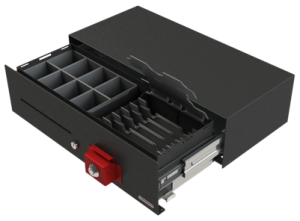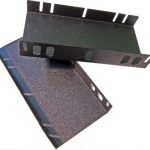
Launching a new business is a daunting task. From defining your business plan, conducting market research, acquiring financial backing, hiring staff, addressing health codes and tax laws and managing inventory, the point-of-sale may be one of the last considerations for many retailers. Store owners may overlook the importance of the point of sale. However, it becomes front of mind once till reconciliation, discrepancies and shrinkage at the front end threaten a business’ bottom-line.
With $1.5 trillion, €2.1 trillion and £216 billion in hard cash circulating the US, EU and British markets, retailers need to adopt forward-thinking processes to secure the point-of-sale from theft. Areas of revenue loss in stores continue to congregate around managing cash at the POS – while cash theft may be intentional or not. Retailers on average spend about 1% of their sales revenue on implementing strategies and technology to prevent shrinkage.[1]
Considering the massive amounts of cash that come through a store daily, managers can find it difficult to curtail the loss of cash at the point-of-sale. The implementation of some simple best practices are mechanisms that can help stop the “bleeding” at the POS. As a preferred manufacturer of cash drawer solutions, here are some of the best practices we encourage retailers to adapt into their cash management protocols to minimize cash handling errors and theft.
- Simple cash management involves key security. Managers should ensure that keys are kept locked in a safe place. If you have a set of master keys, they need to be in a protective safe. Key management and their location awareness is very important in preventing theft at the POS
 For till management, it’s important to keep small amounts of cash in the till and use a safe to store larger bills. On average, store managers keep more cash in their drawers than they should have at any given time. A retailer’s simple investment in a locking till cover will hide the till’s contents and allow you to walk into the back office without exposing the money to unwanted eyes.
For till management, it’s important to keep small amounts of cash in the till and use a safe to store larger bills. On average, store managers keep more cash in their drawers than they should have at any given time. A retailer’s simple investment in a locking till cover will hide the till’s contents and allow you to walk into the back office without exposing the money to unwanted eyes.- Within the POS software, No Sale transactions should be under manager control. Excessive No Sale rings are a typical indication that the drawer is being opened without a transaction associated. Most POS software can run reports on No Sale transactions and in some cases even tie them into a CCTV network allowing management to review the No Sale reasoning. Why expose the contents of the cash drawer, where checks and credit transactions are involved? When there is no need to open the drawer, clerks can place these media types into the drawer via the media slots in the front of the drawer.
 Address the placement of your cash drawer within the checkout furniture. Look at under counter mounting brackets and moving cash drawers away from sight. Cash that is hidden from view is an easy visual theft deterrent. Locking a drawer open with the till removed also prevents thieves from unnecessary POS destruction. Consider investing in drawer hardware add-ons for drawer security. A cash drawer Hasp will add additional security to the cash drawer lock, making it more difficult to break into the drawer.
Address the placement of your cash drawer within the checkout furniture. Look at under counter mounting brackets and moving cash drawers away from sight. Cash that is hidden from view is an easy visual theft deterrent. Locking a drawer open with the till removed also prevents thieves from unnecessary POS destruction. Consider investing in drawer hardware add-ons for drawer security. A cash drawer Hasp will add additional security to the cash drawer lock, making it more difficult to break into the drawer.
Simple cash management practices are easy to implement, minimize theft, and will have a positive impact on a business’s operations and bottom-line. APG’s cash management solutions deliver grocery, convenience, hospitality, and retail customers value, security, reliability and piece-of-mind.
[1] The UK Retail Fraud Survey – 2016
What to learn more? Download our white paper:


